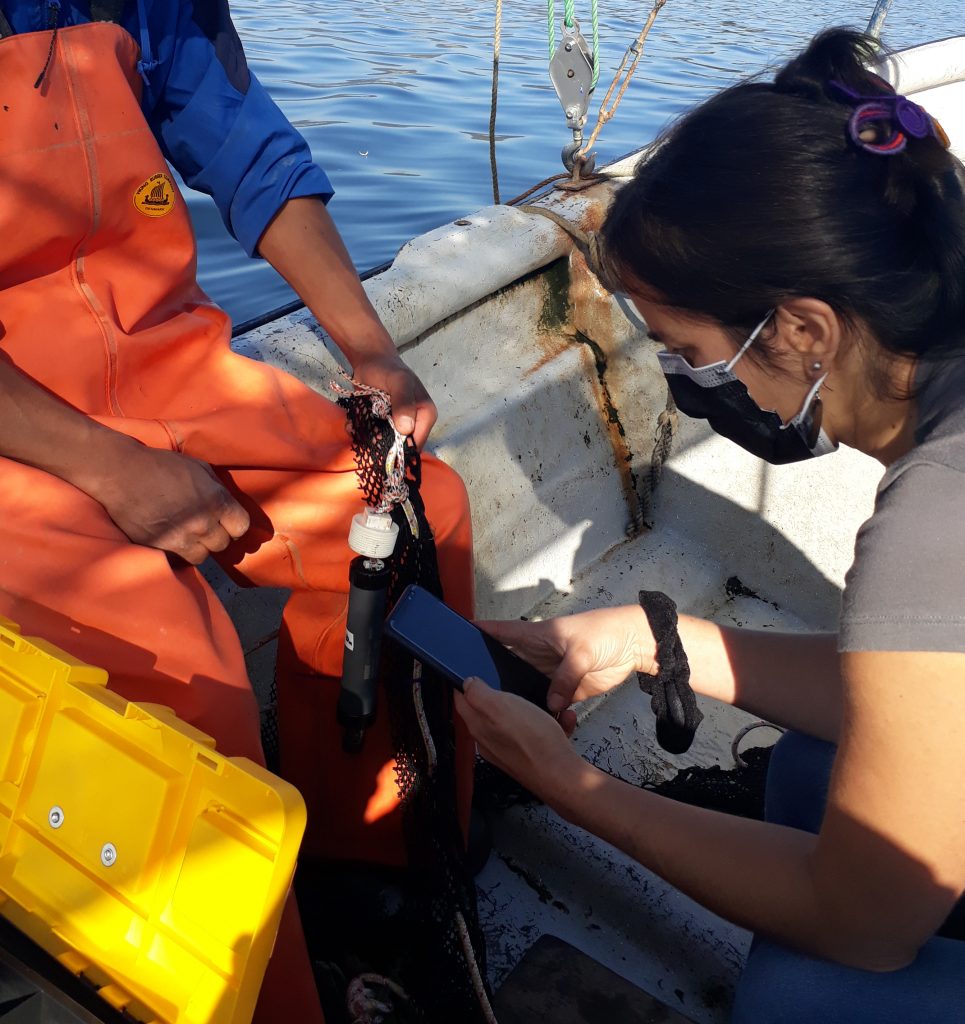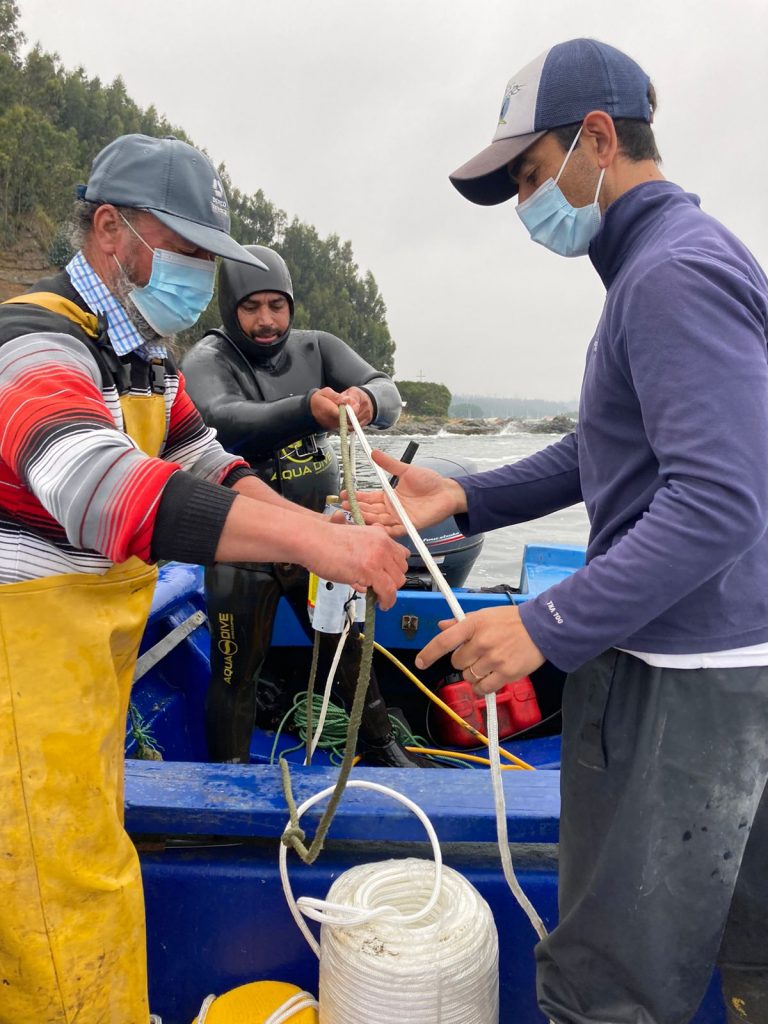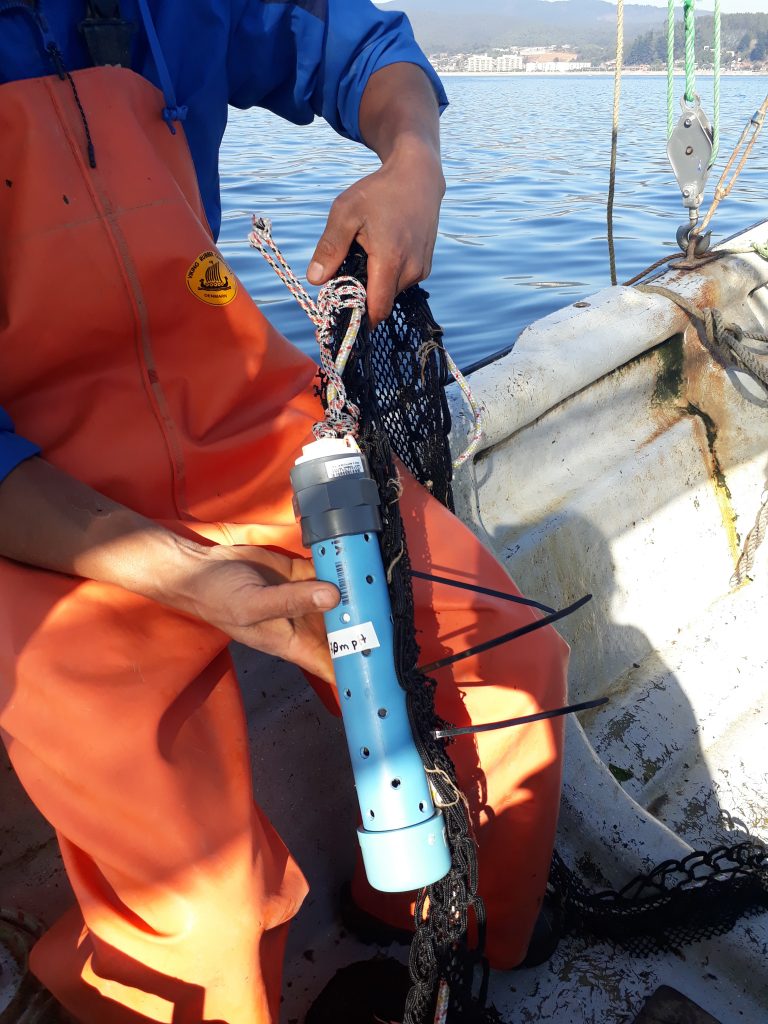12 May Interdisciplinary study addresses 20 years of the phenomenon of marine species stranding in the Biobío and its relationship with extreme events and Climate Change.
Scientists from the Universidad de Concepción and the SECOS Millennium Institute are carrying out a historical analysis of the varazoon events during the last 20 years and their relationship with natural and anthropogenic climatic events. Analyses show that strandings have increased exponentially from 2006 to date, with the most recurrent in the towns of Coronel, Tomé and Arauco. Implementation of an observation system will allow them to establish the causes of these phenomena in management areas and aquaculture zones.
Strandings of marine organisms in coastal areas are phenomena that have become very frequent throughout history and have been attributed to both natural and anthropogenic causes, such as marine pollution.
However, these phenomena may be associated with many natural factors, such as the presence of harmful microalgae, diseases caused by viruses or bacteria, natural disorientation of animals moving towards the coast, or the events of coastal upwelling, where cold waters of higher acidity (low pH), with little oxygen and many nutrients, emerge from deeper waters to the surface.
An important part of these events of massive strandings of marine organisms, such as crustaceans, fish or mollusks, have been associated with the presence of these low pH and oxygen waters. However, there are no rigorous scientific analyses to establish the cause-effect relationship between the two processes.
A team of scientists from the Universidad de Concepción, Universidad del Biobío and the Millennium Institute of Coastal Socio-ecology (SECOS), are carrying out different studies aimed at generating quality scientific information to explain these phenomena. One of these investigations has been part of the thesis work of Sebastián Sepúlveda, a student of Environmental Engineering at UdeC, who recently completed his final undergraduate research on this phenomenon.
The study showed that these strandings have increased exponentially from 2006 to date, with the municipalities of Coronel, Tomé and Arauco being those where the phenomenon has been most recurrent. In addition, more than 80% of the events have occurred during the summer months, where species such as the common sardine and anchoveta have been the most associated with these events, followed by some species of mollusks and crabs..
“Several of these stranding events have been associated precisely with upwelling events or upwelling of water with low oxygen, conditions that occur after strong winds blow from the south, such as what happens in the summer months”, explains Sebastian Sepulveda, who approved his thesis under the guidance of Drs. Cristian Vargas and Luisa Saavedra from theLaboratory of Coastal Ecosystems and Global Change (ECCALab)of the School of Environmental Sciences, in addition to Dr. Dr. Laura Farías from the Department of Oceanography of the same university, and Dr. Gonzalo Saldías from the Universidad del Bio-Bio, also part of the SECOS Millennium Institute.
Also, a more detailed scientific analysis carried out by the group of researchers, has shown that about 80% of the stranding events occur precisely when these winds blow from the south or southwest. The study was complemented with information on oxygen concentrations in seawater that have been recorded by different oceanographic platforms, such as the POSAR buoy maintained by the Center for Climate and Resilience Research (CR2) to the north of Concepción Bay, where Dr. Farías also collaborates.
“The large crab stranding event occurred in Laraquete in November 2019, occurred for example just 4 to 5 days after an event in which the oxygen in the seawater reached very low values,below the tolerance level that crabs can withstand, and which have been estimated through laboratory experiments that have been carried out by different scientists,” explain the researchers.
Dr. Vargas says that this is the first time that a community of Chilean scientists has carried out an interdisciplinary analysis to determine the perception of the fishing and aquaculture communities in relation to these variances. “Coastal communities already have the impression that these stranding events have increased in frequency, but that they seem to be of lesser magnitude, generating important impacts in terms of tourism losses, fishing bans, unpleasant odors, among other effects, which have important economic implications for those affected,” adds the SECOS researcher.
However, there is a high percentage of the local community that believes that these stranding events could also be associated with the contamination of coastal waters by industrial activities in the region. Vargas explains that, “there may probably be a mixture of forcing factors, such as pollution and upwelling events. A marine organism, stressed or affected by the contaminants that are discharged on the coast, could become much more sensitive to the cumulative effects that can generate these waters of higher acidity and with little oxygen, which occur during these upwelling events in summer, and that is something that deserves to be studied in the field and in the laboratory”.
Coastal observing systems
In view of the recurrent nature of these phenomena, and the fact that coastal communities perceive their increase in recent years, it is important to have ocean observation systems, but not only for academic purposes and far from the coast, but also associated with fishing coves and marine farming centers, so that they become tools that improve the adaptive capacity of fishing and aquaculture communities.
In this context, the Dr. Luisa Saavedra, from the EccaLabis conducting a novel study funded by a project funded by a project “Fondecyt Iniciación”, that involves monitoring a series of environmental variables using autonomous sensors to measure, for example, temperature, salinity, dissolved oxygen and pH within an aquaculture concession located in the Bay of Coliumo. In this same geographic area, an important massive stranding of sardines and anchovies was recorded during the month of February of this year, making this the only group of researchers to have environmental data measured in the same area, which allows us to better attribute causality to this event.
It should be noted that in this coastal area it is common to observe a decrease in pH when oxygen drops, so these events occur with hypoxic and acidic waters, triggered by the typical coastal upwelling in spring and summer.
That is, fish such as sardines and anchovies, which approach the coast to feed or reproduce, encounter a mass of acidic water without oxygen and if these conditions last too long, they could generate strandings. However, this hypothesis is still under study and longer monitoring is required to understand all the detailed causes of these events.
The doctor Saavedra explains that “the stranding event was reported by fishermen and inhabitants of Coliumo Cove between February 19 and 21, and during this period hypoxic waters (very low in oxygen, with levels below 2 mg/L) were observed. Thanks to the recording of the autonomous sensors, it was observed that this hypoxia event lasted 43 hours and occurred throughout the water column, which generated extreme and harmful conditions for marine fauna, especially for fish that are not adapted to withstand long periods without oxygen”.

In this same sense, and within the framework of a “Regular Fondecyt” project of Dr. Vargas, together with Dr. Antonio Cuevas of the SECOS Millennium Institute, they have also deployed a series of instruments that measure similar variables. These instruments are being installed in management areas in different zones of the Gulf of Arauco, such as Punta Lavapié, Laraquete and Chome, with the objective of characterizing the environmental conditions and then transferring them to the laboratory to carry out different types of experiments.
“We need to know how tolerant the different populations of marine organisms distributed within the Gulf of Arauco are to the low pH and oxygen levels experienced in the area, but more interestinglyto know if these populations have the potential to withstand such conditions for longer periods of days under future climate change scenarios,” explain the researchers.
For the group of scientists, the sustainability of the coastal zone requires inter- and transdisciplinary efforts, which also contemplate the co-production of knowledge where not only scientists gather information to answer questions, but where it occurs naturally through a process involving coastal communities, indigenous peoples, and those who can contribute with their knowledge to address these global issues.
Studies in the Biobío Region, the area with the highest number of males in the country
This study collects data on stranding events over the last 20 years. Coronel is the commune with the highest number of registered stranding events. In Bahía de Coliumo 8 strandings have been recorded, in Bahía de Concepción 12, in Bahía San Vicente 2 and in Arauco Goulf, 29. Sardines can be found in more than half of the strands, anchovetas in a little more than 1/3.
In a complementary perception study (N=20) conducted by Sebastián Sepúlveda among fishermen and fish farmers in the area, it was found that their main concerns were loss of resources, fishing prohibition, unpleasant odors, and loss of tourism. In the same perception survey, people attributed the main cause of strandings to pollution, followed by natural causes and then oxygen-depleted water.
The Biobío region has the largest number of stranding events at a national level. 90% of the strandings have occurred in summer and only 5 in winter in 15 years.
In summary, the analysis shows the need for integrated studies of the coastal ocean with more variables that consider other influential or triggering factors in strandings such as algal blooms, nutrients from anthropogenic activities, fish migration, lunar phases with influence on tides and swells, reproductive phases of species and irruption of warm waters.
“In this sense, having a research center of excellence where researchers from different disciplines work, and where not only marine biologists and oceanographers, but also chemists, biologists, geographers, evolutionary ecologists, engineers, sociologists, economists, and political scientists come together, allows us to approach these types of problems from a different perspective,” explains Cristian Vargas.





